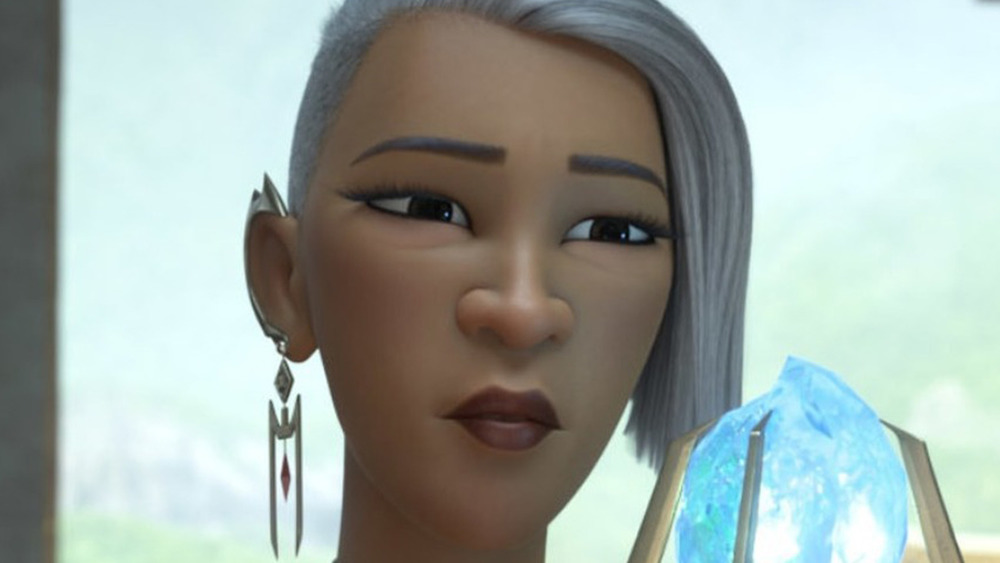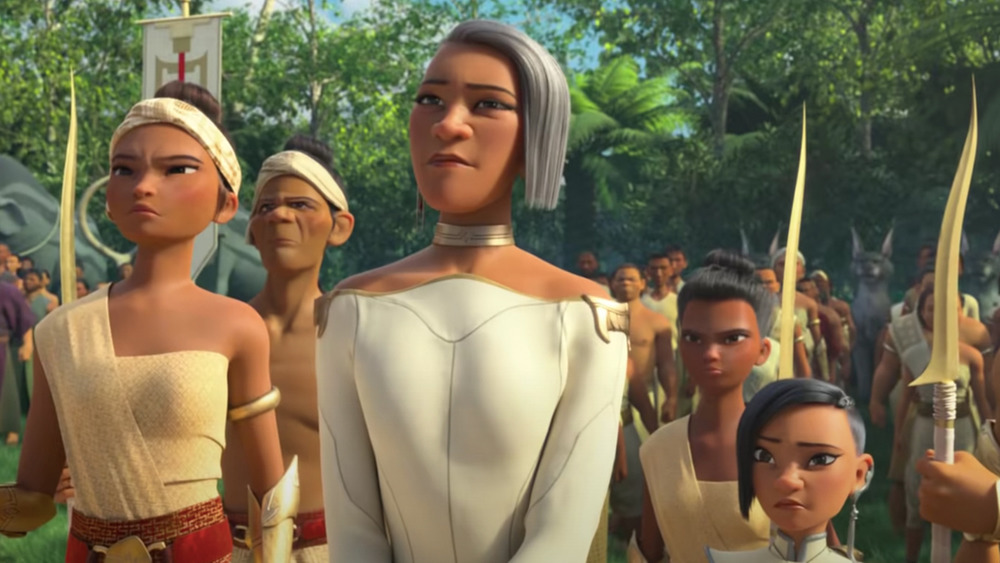The Real Reason Virana Wanted To Stop Raya In Raya And The Last Dragon
In Raya and the Last Dragon's opening, the titular Raya explains in an introductory voiceover that dragons inhabited what was once a unified kingdom of Kumandra about 500 years prior her birth. One day during that time, a horde of evil spirits called the Druun appeared. The dragons, who supplied Kumandra's human population with rain and water, subsequently fought and were gradually turned to stone by the Druun. In order to stop them, the last five living dragons combined their powers to create a magical orb that drove the Druun away once and for all. Doing so saved Kumandra's human population, but all of its dragons except for one remained petrified. Furthermore, vying for control over the orb split Kumandra's human population into the five tribes of Heart, Fang, Tail, Talon, and Spine.
Raya, the princess of Heart, is a child in the film's first sequence following its expository opening. Her father, who leads Heart, dreams of uniting the five tribes into a single kingdom once again. Therefore, he invites representatives from each tribe to Heart in order to negotiate unification. While there, Fang princess Namaari, under orders from her mother Virana, manipulates Raya into leading her into the chamber that houses the orb. An ensuing melee between all five tribes splits the orb into five pieces and unleashes the Druun anew. Raya leaves in search of the shattered orb, and the film then picks up her story six years after her quest's inciting incident.
Namaari, still under orders from Virana, pursues and attempts to stop Raya throughout her journey. While Raya reassembling the orb would drive away the Druun once again, Virana prefers a new sort of status quo, in which Fang prospers in spite of the presence of the Druun, hence her daughter's active opposition.
Fang thrived during wartime
The Druun are vulnerable to two things: the orb and water. While the reemergence of the Druun results in much of humanity being turned to stone, those with ample protection from either a piece of the orb or a body of water remain safe.
The tribe of Fang benefits from both of these weaknesses. Fang leader Virana owns one of the five pieces of the orb, while the city itself is surrounded by a body of water. Therefore, Fang is ultimately able to expand and flourish under the presence of the Druun thanks to its uniquely strategic position in driving away the evil spirits plaguing Kumandra. Thus, while the reunification of the orb may be good for humanity as a whole, Fang would lose its advantage over other tribes in a post-Druun society.
Furthermore, Virana explains that she's afraid of other tribes blaming Fang for the orb's shattering in the event that Raya succeeds on her quest and reunifies Kumandra. With the Druun keeping humanity separated, Fang doesn't have to answer for inciting the melee that shattered the orb six years prior. Therefore, on top of jeopardizing Fang's prosperity, Virana worries that reassembling the orb might ultimately drive Kumandra's revived human population to demand reparations of some sort from Fang. Thus, while villainous, Virana is motivated in her antagonism by what she believes to be the good of the people over whom she rules.

